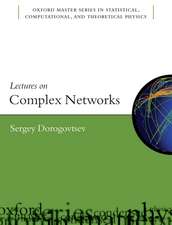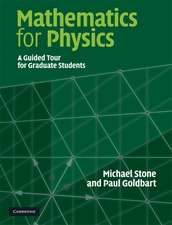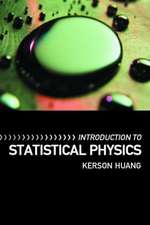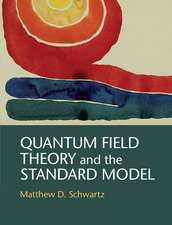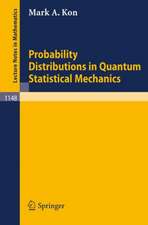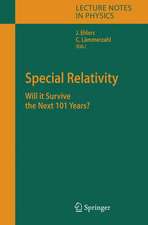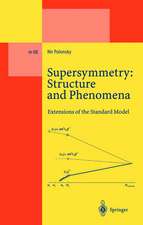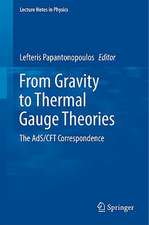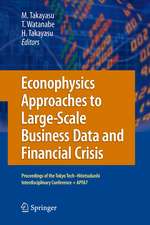Noise Theory and Application to Physics: From Fluctuations to Information: Advanced Texts in Physics
Autor Philippe Réfrégieren Limba Engleză Hardback – 27 apr 2004
| Toate formatele și edițiile | Preț | Express |
|---|---|---|
| Paperback (1) | 388.52 lei 6-8 săpt. | |
| Springer – 12 dec 2011 | 388.52 lei 6-8 săpt. | |
| Hardback (1) | 395.85 lei 6-8 săpt. | |
| Springer – 27 apr 2004 | 395.85 lei 6-8 săpt. |
Din seria Advanced Texts in Physics
- 15%
 Preț: 590.30 lei
Preț: 590.30 lei -
 Preț: 480.01 lei
Preț: 480.01 lei -
 Preț: 202.50 lei
Preț: 202.50 lei - 15%
 Preț: 475.62 lei
Preț: 475.62 lei - 15%
 Preț: 710.75 lei
Preț: 710.75 lei - 15%
 Preț: 468.57 lei
Preț: 468.57 lei -
 Preț: 393.35 lei
Preț: 393.35 lei - 15%
 Preț: 571.96 lei
Preț: 571.96 lei -
 Preț: 395.47 lei
Preț: 395.47 lei -
 Preț: 403.75 lei
Preț: 403.75 lei - 15%
 Preț: 542.04 lei
Preț: 542.04 lei - 18%
 Preț: 792.96 lei
Preț: 792.96 lei - 15%
 Preț: 658.70 lei
Preț: 658.70 lei - 18%
 Preț: 729.68 lei
Preț: 729.68 lei - 18%
 Preț: 720.53 lei
Preț: 720.53 lei - 18%
 Preț: 975.10 lei
Preț: 975.10 lei -
 Preț: 412.78 lei
Preț: 412.78 lei - 15%
 Preț: 713.69 lei
Preț: 713.69 lei - 15%
 Preț: 588.50 lei
Preț: 588.50 lei -
 Preț: 402.76 lei
Preț: 402.76 lei - 18%
 Preț: 739.81 lei
Preț: 739.81 lei - 15%
 Preț: 651.84 lei
Preț: 651.84 lei - 15%
 Preț: 646.11 lei
Preț: 646.11 lei - 15%
 Preț: 653.14 lei
Preț: 653.14 lei - 23%
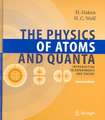 Preț: 676.66 lei
Preț: 676.66 lei -
 Preț: 413.15 lei
Preț: 413.15 lei - 18%
 Preț: 730.79 lei
Preț: 730.79 lei - 15%
 Preț: 644.30 lei
Preț: 644.30 lei - 15%
 Preț: 543.34 lei
Preț: 543.34 lei - 15%
 Preț: 652.17 lei
Preț: 652.17 lei -
 Preț: 388.52 lei
Preț: 388.52 lei - 15%
 Preț: 605.20 lei
Preț: 605.20 lei - 18%
 Preț: 798.50 lei
Preț: 798.50 lei - 18%
 Preț: 1852.57 lei
Preț: 1852.57 lei - 18%
 Preț: 947.85 lei
Preț: 947.85 lei - 18%
 Preț: 969.44 lei
Preț: 969.44 lei
Preț: 395.85 lei
Nou
Puncte Express: 594
Preț estimativ în valută:
75.76€ • 78.26$ • 63.05£
75.76€ • 78.26$ • 63.05£
Carte tipărită la comandă
Livrare economică 26 martie-09 aprilie
Preluare comenzi: 021 569.72.76
Specificații
ISBN-13: 9780387201542
ISBN-10: 0387201548
Pagini: 288
Ilustrații: XIII, 288 p.
Dimensiuni: 155 x 235 x 18 mm
Greutate: 0.6 kg
Ediția:2004
Editura: Springer
Colecția Springer
Seria Advanced Texts in Physics
Locul publicării:New York, NY, United States
ISBN-10: 0387201548
Pagini: 288
Ilustrații: XIII, 288 p.
Dimensiuni: 155 x 235 x 18 mm
Greutate: 0.6 kg
Ediția:2004
Editura: Springer
Colecția Springer
Seria Advanced Texts in Physics
Locul publicării:New York, NY, United States
Public țintă
ResearchCuprins
1 Introduction.- 2 Random Variables.- 2.1 Random Events and Probability.- 2.2 Random Variables.- 2.3 Means and Moments.- 2.4 Median and Mode of a Probability Distribution.- 2.5 Joint Random Variables.- 2.6 Covariance.- 2.7 Change of Variables.- 2.8 Stochastic Vectors.- Exercises.- 3 Fluctuations and Covariance.- 3.1 Stochastic Processes.- 3.2 Stationarity and Ergodicity.- 3.3 Ergodicity in Statistical Physics.- 3.4 Generalization to Stochastic Fields.- 3.5 Random Sequences and Cyclostationarity.- 3.6 Ergodic and Stationary Cases.- 3.7 Application to Optical Coherence.- 3.8 Fields and Partial Differential Equations.- 3.9 Power Spectral Density.- 3.10 Filters and Fluctuations.- 3.11 Application to Optical Imaging.- 3.12 Green Functions and Fluctuations.- 3.13 Stochastic Vector Fields.- 3.14 Application to the Polarization of Light.- 3.15 Ergodicity and Polarization of Light.- 3.16 Appendix: Wiener–Khinchine Theorem.- Exercises.- 4 Limit Theorems and Fluctuations.- 4.1 Sum of Random Variables.- 4.2 Characteristic Function.- 4.3 Central Limit Theorem.- 4.4 Gaussian Noise and Stable Probability Laws.- 4.5 A Simple Model of Speckle.- 4.6 Random Walks.- 4.7 Application to Diffusion.- 4.8 Random Walks and Space Dimensions.- 4.9 Rare Events and Particle Noise.- 4.10 Low Flux Speckle.- Exercises.- 5 Information and Fluctuations.- 5.1 Shannon Information.- 5.2 Entropy.- 5.3 Kolmogorov Complexity.- 5.4 Information and Stochastic Processes.- 5.5 Maximum Entropy Principle.- 5.6 Entropy of Continuous Distributions.- 5.7 Entropy, Propagation and Diffusion.- 5.8 Multidimensional Gaussian Case.- 5.9 Kullback-Leibler Measure.- 5.10 Appendix: Lagrange Multipliers.- Exercises.- 6 Thermodynamic Fluctuations.- 6.1 Gibbs Statistics.- 6.2 Free Energy.- 6.3 Connection with Thermodynamics.- 6.4Covariance of Fluctuations.- 6.5 A Simple Example.- 6.6 Fluctuation-Dissipation Theorem.- 6.7 Noise at the Terminals of an RC Circuit.- 6.8 Phase Transitions.- 6.9 Critical Fluctuations.- Exercises.- 7 Statistical Estimation.- 7.1 The Example of Poisson Noise.- 7.2 The Language of Statistics.- 7.3 Characterizing an Estimator.- 7.4 Maximum Likelihood Estimator.- 7.5 Cramer-Rao Bound in the Scalar Case.- 7.6 Exponential Family.- 7.7 Example Applications.- 7.8 Cramer-Rao Bound in the Vectorial Case.- 7.9 Likelihood and the Exponential Family.- 7.10 Examples in the Exponential Family.- 7.11 Robustness of Estimators.- 7.12 Appendix: Scalar Cramer-Rao Bound.- 7.13 Appendix: Efficient Statistics.- 7.14 Appendix: Vectorial Cramer-Rao Bound.- Exercises.- 8 Examples of Estimation in Physics.- 8.1 Measurement of Optical Flux.- 8.2 Measurement Accuracy in the Presence of Gaussian Noise.- 8.3 Estimating a Detection Efficiency.- 8.4 Estimating the Covariance Matrix.- 8.5 Application to Coherency Matrices.- 8.6 Making Estimates in the Presence of Speckle.- 8.7 Fluctuation-Dissipation and Estimation.- Exercises.- 9 Solutions to Exercises.- 9.1 Chapter Two. Random Variables.- 9.2 Chapter Three. Fluctuations and Covariance.- 9.3 Chapter Four. Limit Theorems and Fluctuations.- 9.4 Chapter Five. Information and Fluctuations.- 9.5 Chapter Six. Statistical Physics.- 9.6 Chapter Seven. Statistical Estimation.- 9.7 Chapter Eight. Examples of Estimation in Physics.- References.
Recenzii
From the reviews:
"Philippe Réfrégier’s book is an introduction to the fundamental principles of randomness that can be encountered in a physicist’s everyday life. … Réfrégier’s book is a good textbook for physics graduate students and researchers who want to go a little deeper into probability theory … . I would also recommend it to mathematicians who want to get a different point of view on probability theory. Students will undoubtedly profit from a variety of exercises that come with … solutions." (Achim Klenke, Zentralblatt MATH, Vol. 1092 (18), 2006)
"The book provides a good presentation of the statistical basis for theories of noise in physics. … Noise theory and application to physics provides a precise description of the theoretical background and practical tools for noise and fluctuation analyses. It will thus be of great interest to undergraduate or postgraduate students and researchers in physics and the engineering sciences." (Stefan Adams, Mathematical Reviews, Issue 2006 e)
"Philippe Réfrégier’s book is an introduction to the fundamental principles of randomness that can be encountered in a physicist’s everyday life. … Réfrégier’s book is a good textbook for physics graduate students and researchers who want to go a little deeper into probability theory … . I would also recommend it to mathematicians who want to get a different point of view on probability theory. Students will undoubtedly profit from a variety of exercises that come with … solutions." (Achim Klenke, Zentralblatt MATH, Vol. 1092 (18), 2006)
"The book provides a good presentation of the statistical basis for theories of noise in physics. … Noise theory and application to physics provides a precise description of the theoretical background and practical tools for noise and fluctuation analyses. It will thus be of great interest to undergraduate or postgraduate students and researchers in physics and the engineering sciences." (Stefan Adams, Mathematical Reviews, Issue 2006 e)
Textul de pe ultima copertă
In many situations, physical quantities are perturbed or evolve in a not fully predictable way. We then speak about noise or fluctuations and we are generally faced to different questions such as: What are the correct physical models to describe them? What are the most practical mathematical tools to deal with them? How can relevant information be extracted in the presence of noise?
Noise theory and application to physics provides a precise description of the theoretical background and practical tools for noise and fluctuation analyses. It not only introduces basic mathematical descriptions and properties of noise and fluctuations but also discusses the physical origin of different noise models and presents some statistical methods which optimize measurements in the presence of such fluctuations.
Noise theory and application to physics investigates a number of ideas about noise and fluctuations in a single book in relation with probability and stochastic processes, information theory, statistical physics and statistical inference. The different notions are illustrated with many application examples from physics and engineering science and problems with solutions allow the reader to both check his understanding and to deepen some aspects.
Indeed, the main objective of Noise theory and application to physics is to be a practical guide for the reader for going from fluctuation to information. It will thus be of great interest to undergraduate or postgraduate students and researchers in physics and engineering sciences.
Noise theory and application to physics provides a precise description of the theoretical background and practical tools for noise and fluctuation analyses. It not only introduces basic mathematical descriptions and properties of noise and fluctuations but also discusses the physical origin of different noise models and presents some statistical methods which optimize measurements in the presence of such fluctuations.
Noise theory and application to physics investigates a number of ideas about noise and fluctuations in a single book in relation with probability and stochastic processes, information theory, statistical physics and statistical inference. The different notions are illustrated with many application examples from physics and engineering science and problems with solutions allow the reader to both check his understanding and to deepen some aspects.
Indeed, the main objective of Noise theory and application to physics is to be a practical guide for the reader for going from fluctuation to information. It will thus be of great interest to undergraduate or postgraduate students and researchers in physics and engineering sciences.
Caracteristici
Includes supplementary material: sn.pub/extras


